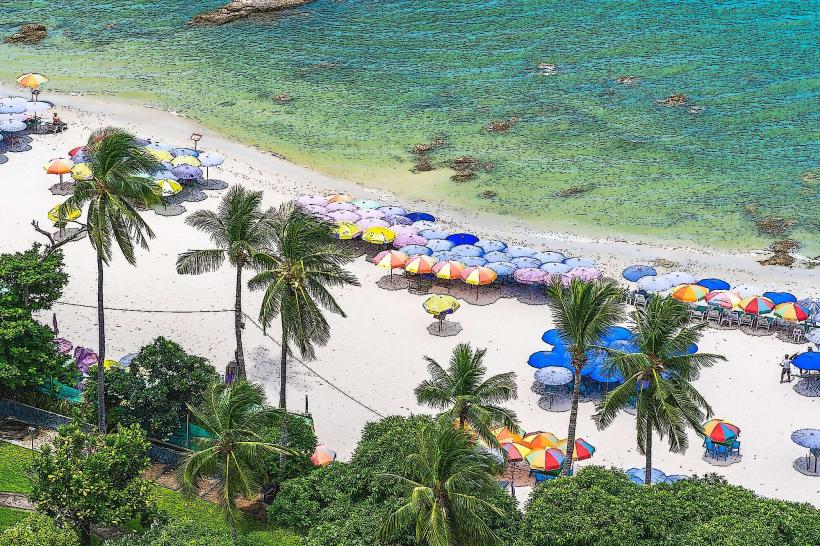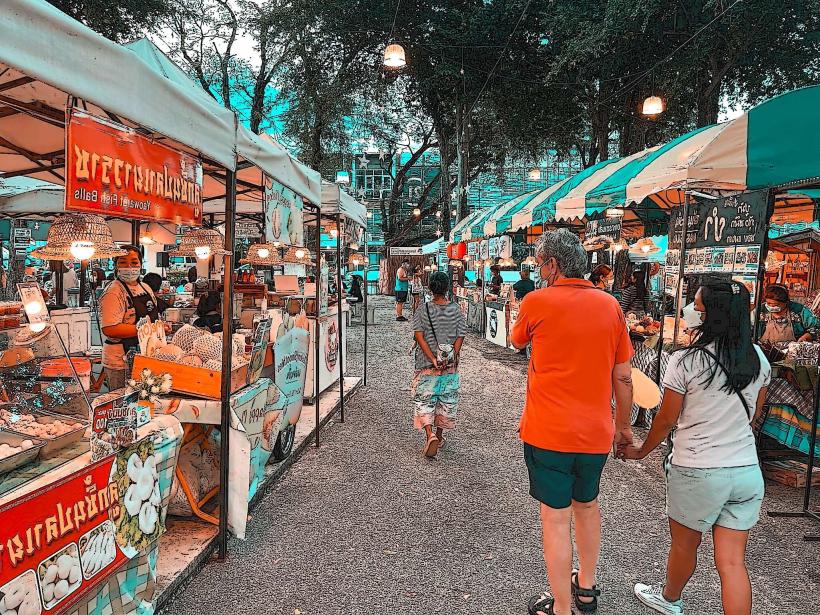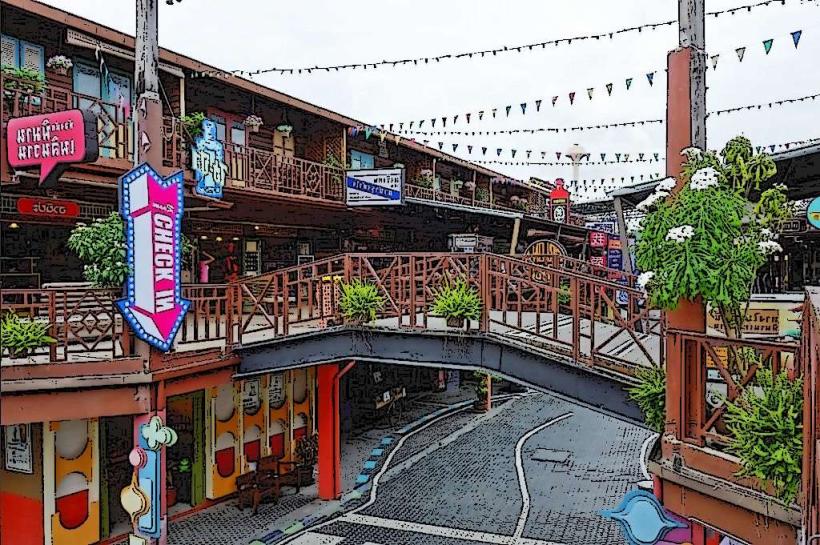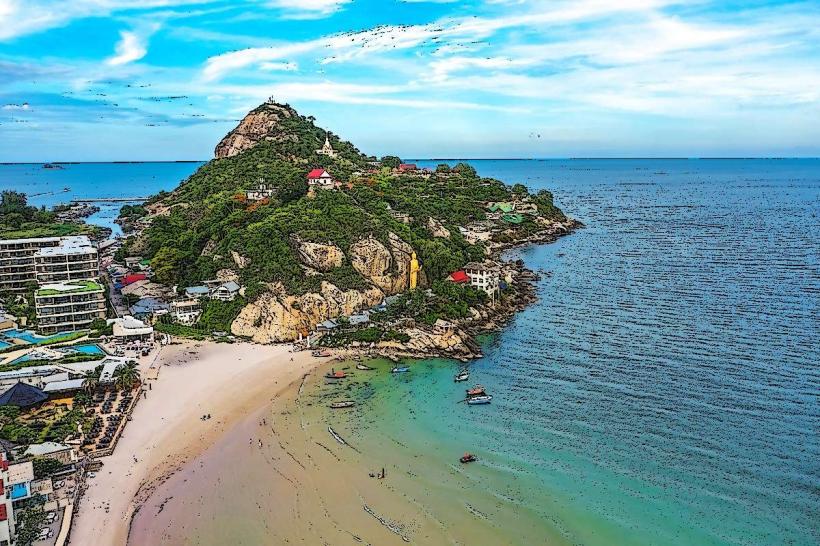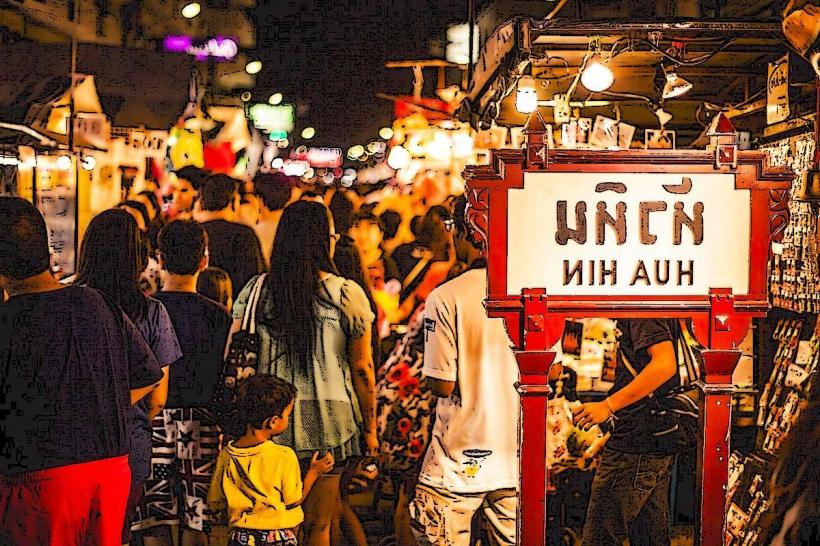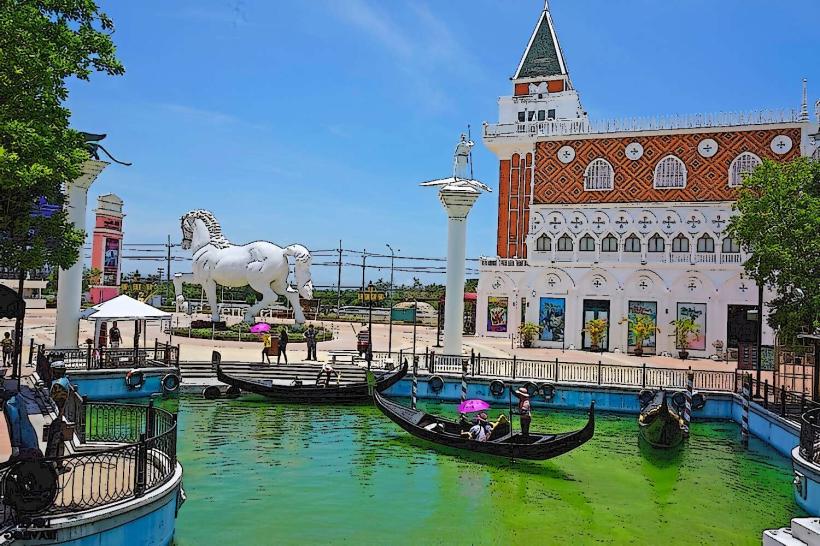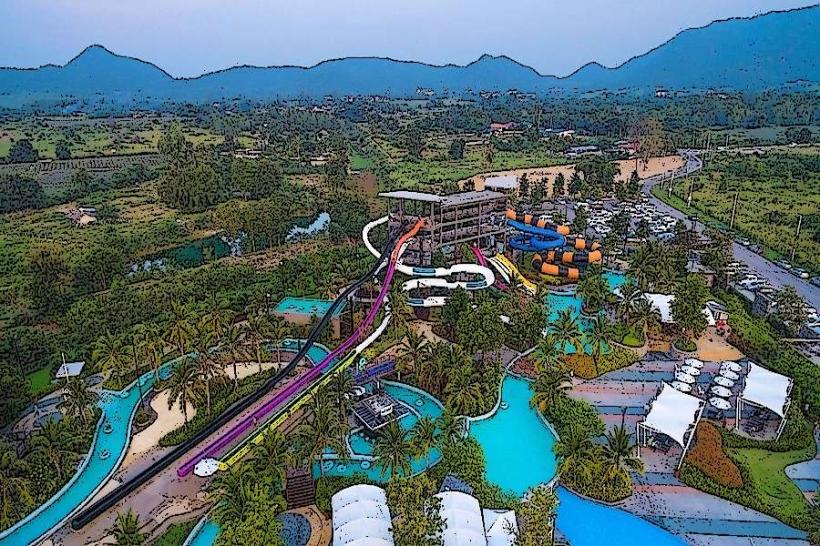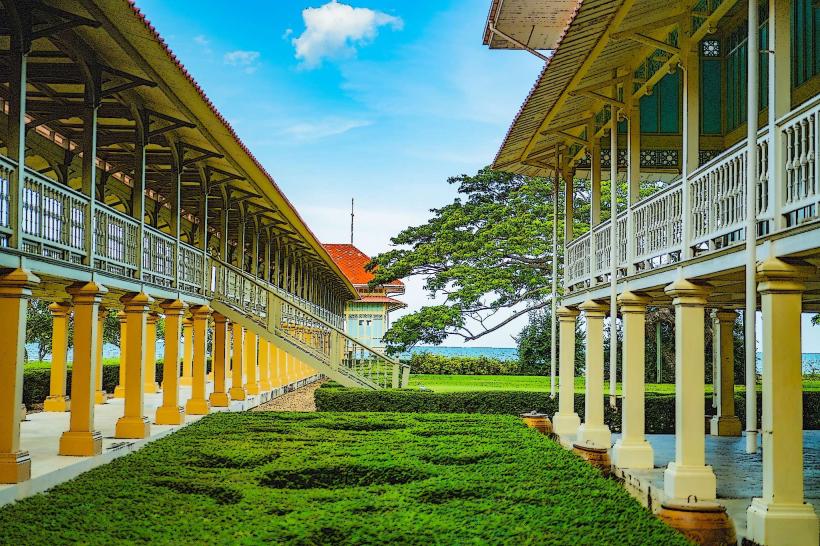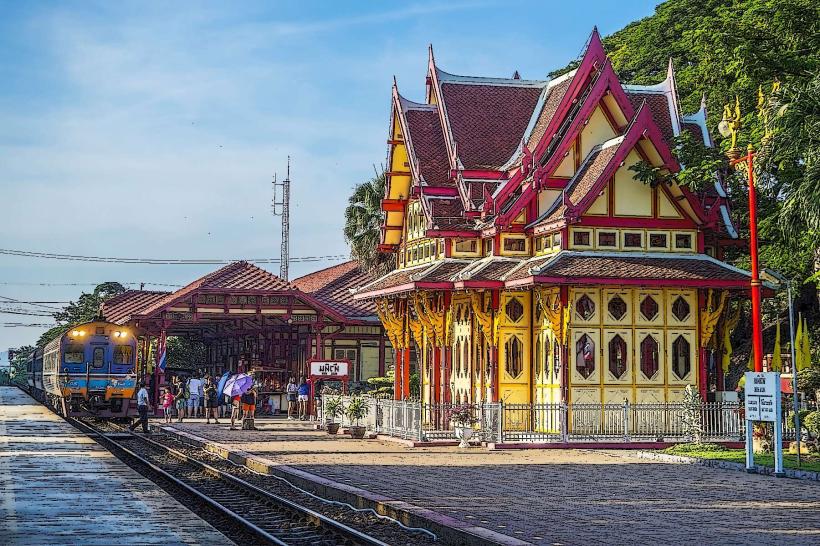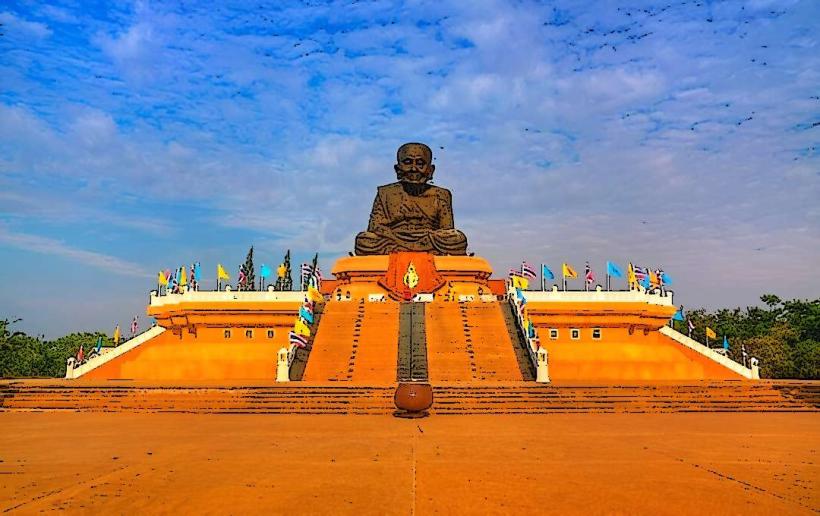Information
City: Hua HinCountry: Thailand
Continent: Asia
Hua Hin, Thailand, Asia
Overview
Hua Hin is a lively resort town in western Thailand, perched on the Gulf’s sandy edge in Prachuap Khiri Khan Province, at the same time hua Hin, with its quiet beaches, traces of royal history, and easygoing charm, draws visitors from near and far-especially anyone craving a deliberate morning by the sea.Hua Hin, one of Thailand’s oldest beach resorts, blends golden sands and fishing boats with lively markets, historic temples, and sleek modern comforts, to boot hua Hin sits about 200 kilometers, or a three-hour drive, south of Bangkok, and just 50 kilometers from Cha-Am, another lively beach town.The town sits on the Gulf of Thailand, where soft waves lap the shore, making it a perfect getaway for beach lovers, while climate: Hua Hin enjoys a tropical wet-and-dry climate with three clear seasons.From March to May, the warm season pushes temperatures up to 35°C (95°F), and the air feels thick with humidity, besides summer’s heat draws beach lovers to the shore, where they can stretch out on warm sand and listen to the waves.From June to October, Hua Hin gets its rainy season, with steady but moderate downpours-often just quick bursts that fade before you’ve even finished your coffee, not only that it’s still warm out, but the kind of warmth that comes with a hazy sky and a breeze that makes the sand feel cool under your feet.Cool Season, from November to February, is the best time to go-days hover between 24°C and 32°C (75°F to 90°F), and the air feels crisp enough for a light breeze on your skin, not only that it’s peak tourist season in Hua Hin, when the air feels warm but not heavy, perfect for wandering the markets or spending a day on the beach.Hua Hin’s story begins in the early 1900s, when the quiet fishing village transformed into a royal seaside retreat, meanwhile royal Influence: Hua Hin began to draw attention in the 1920s, when King Rama VII built its radiant red railway station and the seaside Klai Kangwon Palace.It appears, Because the king favored the area, Hua Hin grew into a seaside retreat where the royal family strolled its beaches and Thai elites came to unwind, besides since then, the town’s stayed a favorite spot for families who want peace and space to breathe, where the loudest sound might be a screen door creaking in the afternoon sun.Over the years, Hua Hin has transformed from a quiet fishing village where nets dried in the sun to a lively beach town packed with hotels, resorts, and buzzing attractions, as a result the town’s grown and changed over the years, yet it still holds on to its ancient stone streets and quiet, familiar charm.Hua Hin, part of Prachuap Khiri Khan Province, is run by the Hua Hin Municipality, which manages everything from recent road projects to keeping the streetlights glowing at night, equally important the local council teams up with the national government to keep the town buzzing with visitors and to guide its growth without losing the charm of its cobblestone streets, a little In Hua Hin, tourism fuels most of the economy, while real estate, farming, and the daily haul of fresh fish from local boats add their share, furthermore tourism fuels much of Hua Hin’s economy, drawing visitors year-round to its long beaches and lively night markets.As it happens, Visitors flock here for the quiet stretch of sand, a round of golf under wide blue skies, the comfort of upscale resorts, and the town’s rich cultural roots, alternatively hua Hin draws visitors from all over-European travelers, many from Scandinavia, and Thai holidaymakers from Bangkok and beyond, some arriving with the scent of the sea still clinging to their clothes.Somehow, Real Estate: Hua Hin’s property market has been growing steadily, with sleek high-rise condos, beachfront resorts, and novel neighborhoods springing up to attract both local residents and overseas buyers, in turn with its calm streets, just an hour from Bangkok, and beaches where the sand warms your toes, the town draws people looking for vacation homes or a setting to retire.Agriculture and fishing keep the local economy thriving, with rows of dazzling vegetables and sweet fruit alongside the day’s catch brought in from the shore, simultaneously this region turns out sweet mangoes, crisp watermelons, and rich coconut goods, selling them in village markets and shipping them overseas, fairly In Hua Hin, you’ll find culture and society woven from traditional Thai heritage and the pulse of modern life, like monks passing a glass-fronted café on a quiet street, what’s more families feel at home here, where life moves at an easy pace and children’s laughter drifts from shaded courtyards, drawing both locals and expatriates looking for a peaceful escape.In Hua Hin, people mainly speak Thai, but you’ll hear plenty of English in tourist spots-hotels, beachfront cafés, and shops that welcome visitors from around the world, then religion: Like most of Thailand, Hua Hin is steeped in Buddhism-you’ll spot saffron-robed monks walking the streets at dawn.Several Buddhist temples dot the town, including Wat Hua Hin, where incense drifts through the air as locals and visitors come to pay their respects and practice their faith, moreover festivals: All year long, Hua Hin bursts to life with cultural celebrations, from the vibrant Songkran water festival-where streets echo with laughter, splashes fly through the air, and parades wind past temples-to other traditional ceremonies that honor its rich heritage.Loy Krathong is a breathtaking festival where people set tiny, candlelit offerings adrift on the water to honor the spirits that dwell there, alternatively hua Hin Jazz Festival draws jazz fans from around the globe, filling the beachfront air with the sounds of international stars and homegrown talent.In Hua Hin, the food mirrors its seaside roots-fresh crab, grilled fish, and classic Thai recipes packed with herbs and spice, in turn you can dig into fresh seafood here-think smoky grilled prawns, fragrant fish curry, and a tangy som tam made with crisp green papaya, in a sense The town’s dotted with restaurants serving flavors from around the world-think wood‑fired Italian pizza, fragrant Indian curries, and hearty Western classics, in conjunction with hua Hin is just a few hours from Bangkok by car or train, and once you arrive, smooth roads, tidy sidewalks, and reliable services keep its tourism-driven economy running strong.Hua Hin links to Bangkok along Highway 4, so you can drive down in a few hours or catch a bus that rumbles past rows of palm trees, while it’s about a two-and-a-half to three-hour drive from Bangkok to Hua Hin, long enough to watch the city fade into rice fields and open sky.Hua Hin Railway Station, with its red-and-cream wooden pavilion that catches the morning light, is one of the town’s most charming historic landmarks, offering regular trains to Bangkok and other southern destinations, therefore people learn the station for its striking colonial-style design, with white columns that catch the afternoon light.Hua Hin’s miniature airport, Hua Hin International, handles domestic flights, with planes arriving from Bangkok and Chiang Mai, besides international flights are still scarce, but the airport’s growing fleet-steel beams rising and contemporary gates taking shape-to welcome more travelers.In Hua Hin, you can get around by hopping on a songthaew, flagging down a motorbike taxi, or riding in a rattling tuk-tuk, besides when the trip takes them farther out, visitors usually hop in a rental car or rev up a motorcycle, the engine humming at the first turn of the key, roughly As Hua Hin keeps attracting more visitors, the town finds itself juggling fresh opportunities and real challenges, from crowded beaches to recent business ventures, equally important as Hua Hin draws more visitors each year, the push for sustainable development grows urgent, making sure the sea stays clear and local communities thrive without harm from tourism.People are working hard to promote eco-friendly habits and protect the natural world, from planting trees to keeping streams clear of plastic.
Author: Tourist Landmarks
Date: 2025-10-29
Landmarks in hua-hin

